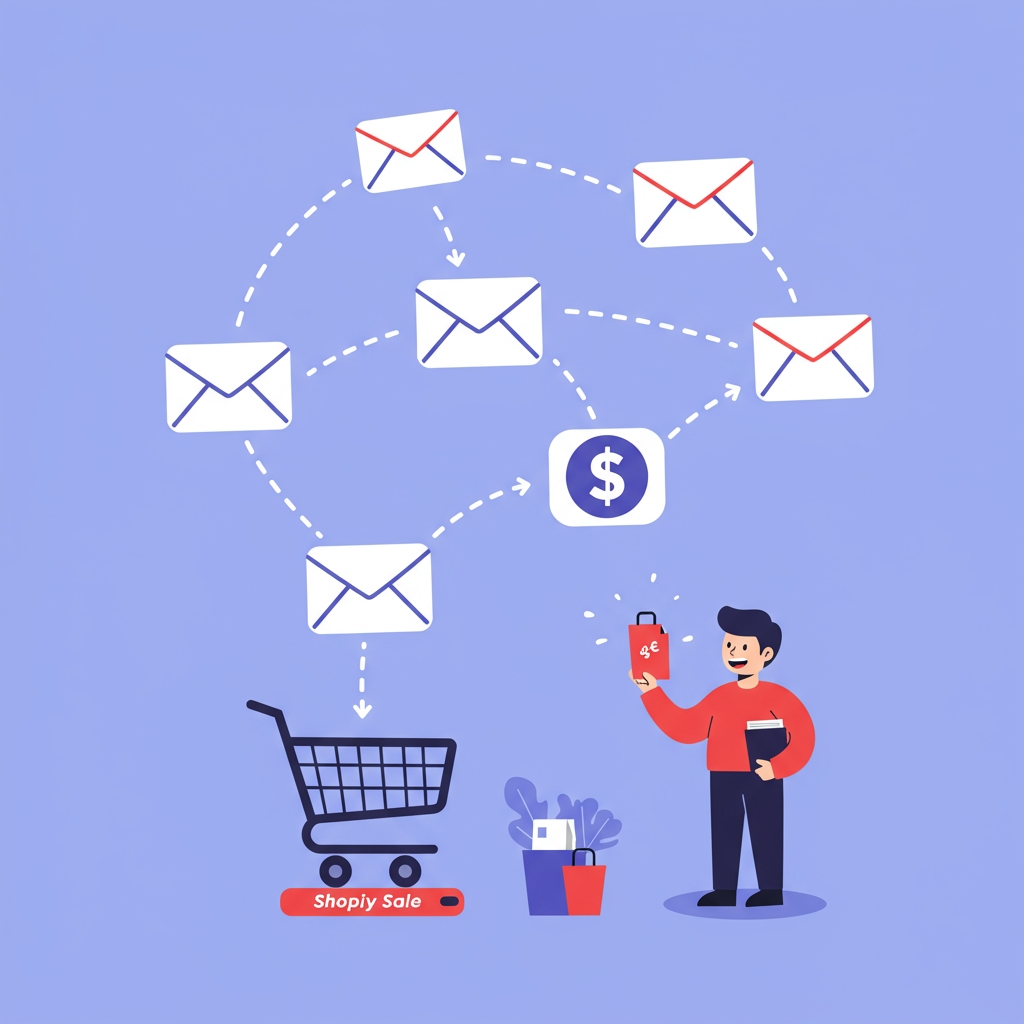Discover how I set up powerful email marketing automations for Shopify stores, turning browsers into buyers and building lasting customer loyalty.
As a Shopify merchant, you’re constantly looking for ways to grow your business, save time, and connect more deeply with your customers. For me, one of the most impactful strategies has always been email marketing automation.
It’s not just about sending newsletters; it’s about creating a personalized, always-on communication system that nurtures leads, recovers lost sales, and builds incredible customer loyalty.
I’ve seen firsthand how a well-implemented email automation strategy can transform a Shopify store, freeing up valuable time while significantly boosting revenue.
So, where do we begin? The first crucial step is choosing the right email marketing platform that integrates seamlessly with your Shopify store.
You have several excellent options. Shopify Email is a fantastic starting point, especially if you’re new to automation, as it’s built right into your admin.
For more advanced segmentation and powerful automation flows, I often recommend platforms like Klaviyo, which is a favorite among many high-growth Shopify brands.
Other strong contenders include Mailchimp, Omnisend, and ActiveCampaign, each with its own strengths depending on your specific needs and budget.
My personal recommendation often leans towards starting with Shopify Email for its simplicity and native integration, or jumping straight to Klaviyo if you’re ready for a more robust, data-driven approach.
Once you’ve selected your platform, the next step is to integrate it with your Shopify store. This usually involves installing an app from the Shopify App Store or setting up an API key.
This integration is absolutely critical. It allows your email platform to sync vital customer data, order history, and product information directly from your Shopify store.
This data sync is what empowers your automations to be truly personalized and effective, knowing who bought what, when they last visited, and even what products they’ve browsed.
Now, let’s dive into the core automation flows that I believe every Shopify merchant should set up. The first, and arguably most important, is the Welcome Series.
This is your brand’s first impression for new subscribers. I typically set up a series of 2-4 emails to be sent over a few days.
The first welcome email should go out immediately after someone subscribes. Thank them, perhaps offer a small discount as a welcome gift, and briefly introduce your brand’s story or mission.
The second email, sent a day or two later, can highlight your best-selling products, share glowing customer testimonials, or explain your unique selling proposition.
Subsequent emails in the series can offer helpful guides, a behind-the-scenes look at your business, or a gentle reminder of their welcome discount.
Next up is the Abandoned Cart Recovery flow – a true revenue-saver. Customers often add items to their cart and then leave for various reasons.
I configure the first abandoned cart email to send within 30-60 minutes of abandonment, serving as a gentle reminder of the items they left behind.
A second email follows about 24 hours later, perhaps with a stronger nudge, social proof, or a limited-time offer to encourage completion.
If they still haven’t converted, a third and final email can be sent 48-72 hours later, often with a more compelling incentive or a clear call to action.
Don’t stop communicating after the sale! Post-Purchase Follow-up flows are essential for building loyalty and encouraging repeat business.
An immediate ‘Thank You’ email after purchase confirms their order, provides tracking information, and expresses your gratitude.
A few days later, I like to send an email with product care tips or usage instructions to help them get the most out of their new purchase.
Around 7-14 days post-purchase, I send a review request email. Customer reviews are invaluable for social proof and future sales.
A few weeks later, based on their purchase history, I set up an email recommending complementary products – a classic cross-sell or upsell opportunity.
For inactive customers, Win-Back Campaigns are crucial. If someone hasn’t purchased in 60-90 days, I initiate a series designed to re-engage them.
The first win-back email might be a simple ‘We miss you!’ message, perhaps with a special offer. Subsequent emails can highlight new arrivals or bestsellers.
Finally, for more advanced setups, I implement Browse Abandonment flows. Similar to abandoned carts, these target customers who viewed specific products but didn’t add them to their cart.
Remember, don’t send the same email to everyone. Segment your audience based on purchase history, browsing behavior, location, and other relevant data points.
Personalization is key. Use dynamic tags to include customer names, specific product recommendations, or order details to make each email feel unique.
Always be testing and optimizing. A/B test your subject lines, call-to-actions, email content, and even send times. Continuous improvement is vital.
Measure your success by tracking open rates, click-through rates, conversion rates, and the direct revenue generated by your automations.
A few best practices I always adhere to: ensure GDPR/CCPA compliance by obtaining proper consent, make sure all emails are mobile-friendly, and always include clear calls to action.
Maintain a consistent brand voice across all your communications. This builds trust and recognition.
What are your biggest challenges with email marketing automation, or what flow has been most successful for you? I’d love to hear your thoughts!
Email automation isn’t a one-time setup; it’s an ongoing process of refinement and adaptation. By investing time in these flows, you’ll build stronger customer relationships and drive significant growth for your Shopify store.






